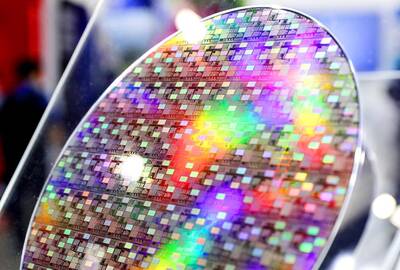Mobile-phone sales in Western Europe dropped last quarter for the first time since at least 2001 as higher costs of living crimped consumer spending, researcher Gartner Inc said.
Total unit sales slipped 16 percent to 35.9 million from a year earlier, a report by Stamford, Connecticut-based Gartner said. The global market rose 14 percent to 294 million units, with Nokia Oyj and Samsung Electronics Co, the world’s two biggest producers, taking market share from Motorola Inc.
European consumers, hurt by an economic slowdown and higher fuel prices, opted for mid-priced devices instead of more expensive ones when buying phones, Gartner said. The Asia-Pacific region led global sales growth, together with eastern Europe, the Middle East and Africa. Sales in North America rose 2.4 percent.
“While sales in emerging markets continued to be driven by strong net new subscribers’ growth, mature markets felt the pressure of an uncertain economic environment,” said Carolina Milanesi, a research director at Gartner in Egham, England.
Gartner predicted global sales would rise 10 percent to 15 percent this year, while the value of the market will be lower than Milanesi had anticipated in December. Longer contract periods have also lengthened the replacement cycle, she said.
Nokia raised its market share by unit sales to 39.1 percent from 35.5 percent a year earlier, Gartner said. Samsung increased its share to 14.4 percent from 12.4 percent, while Motorola fell to 10.2 percent from 18.4 percent. LG Electronics Co increased its share to 8 percent from 6.2 percent.
Nokia benefited from the broadest product portfolio, which ranges from entry-level phones to models with satellite navigation. The Finnish company faces tougher competition in the high-end section and needs to improve user friendliness and design of its phones, Milanesi said.
Samsung and LG, both from South Korea, benefited from demand for touch-screen models, a feature that Apple Inc introduced on its iPhone last year. Both companies also increased their market share sequentially, while Nokia and Motorola lost ground.
Motorola has “little” chance of regaining its No. 2 position and may instead fall into fifth place after LG and Sony Ericsson Mobile Communications Ltd, Milanesi said in an interview. Sony Ericsson, which lost its fourth spot to LG in the first quarter, may rebound with new devices in the second half.
“It will be a heated race between the two,” Milanesi said.

WAITING GAME: The US has so far only offered a ‘best rate tariff,’ which officials assume is about 15 percent, the same as Japan, a person familiar with the matter said Taiwan and the US have completed “technical consultations” regarding tariffs and a finalized rate is expected to be released soon, Executive Yuan spokeswoman Michelle Lee (李慧芝) told a news conference yesterday, as a 90-day pause on US President Donald Trump’s “reciprocal” tariffs is set to expire today. The two countries have reached a “certain degree of consensus” on issues such as tariffs, nontariff trade barriers, trade facilitation, supply chain resilience and economic security, Lee said. They also discussed opportunities for cooperation, investment and procurement, she said. A joint statement is still being negotiated and would be released once the US government has made

‘CRUDE’: The potential countermeasure is in response to South Africa renaming Taiwan’s representative offices and the insistence that it move out of Pretoria Taiwan is considering banning exports of semiconductors to South Africa after the latter unilaterally downgraded and changed the names of Taiwan’s two representative offices, the Ministry of Foreign Affairs (MOFA) said yesterday. On Monday last week, the South African Department of International Relations and Cooperation unilaterally released a statement saying that, as of April 1, the Taipei Liaison Offices in Pretoria and Cape Town had been renamed the “Taipei Commercial Office in Johannesburg” and the “Taipei Commercial Office in Cape Town.” Citing UN General Assembly Resolution 2758, it said that South Africa “recognizes the People’s Republic of China (PRC) as the sole

NEW GEAR: On top of the new Tien Kung IV air defense missiles, the military is expected to place orders for a new combat vehicle next year for delivery in 2028 Mass production of Tien Kung IV (Sky Bow IV) missiles is expected to start next year, with plans to order 122 pods, the Ministry of National Defense’s (MND) latest list of regulated military material showed. The document said that the armed forces would obtain 46 pods of the air defense missiles next year and 76 pods the year after that. The Tien Kung IV is designed to intercept cruise missiles and ballistic missiles to an altitude of 70km, compared with the 60km maximum altitude achieved by the Missile Segment Enhancement variant of PAC-3 systems. A defense source said yesterday that the number of

Taiwanese exports to the US are to be subject to a 20 percent tariff starting on Thursday next week, according to an executive order signed by US President Donald Trump yesterday. The 20 percent levy was the same as the tariffs imposed on Vietnam, Sri Lanka and Bangladesh by Trump. It was higher than the tariffs imposed on Japan, South Korea and the EU (15 percent), as well as those on the Philippines (19 percent). A Taiwan official with knowledge of the matter said it is a "phased" tariff rate, and negotiations would continue. "Once negotiations conclude, Taiwan will obtain a better